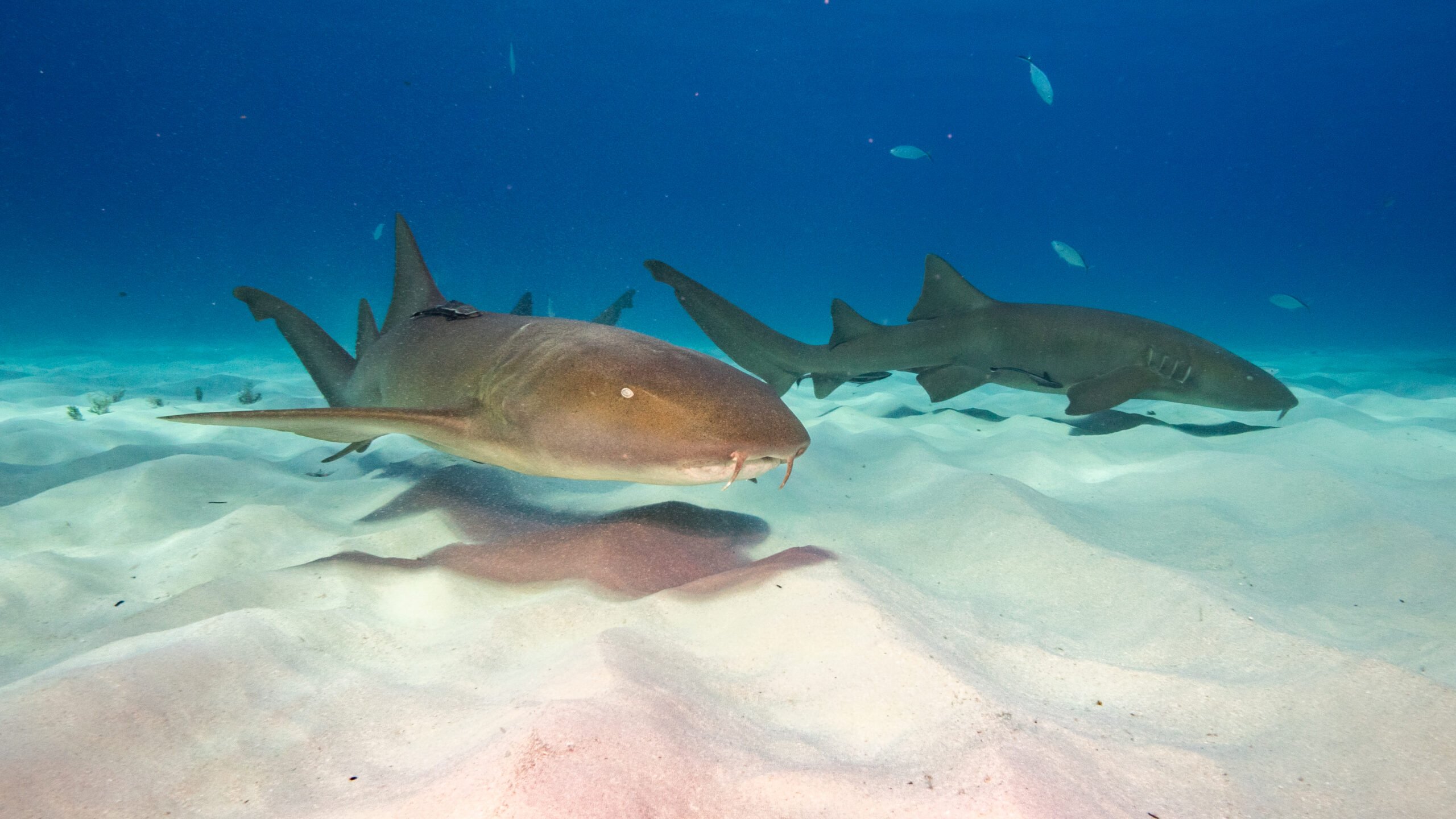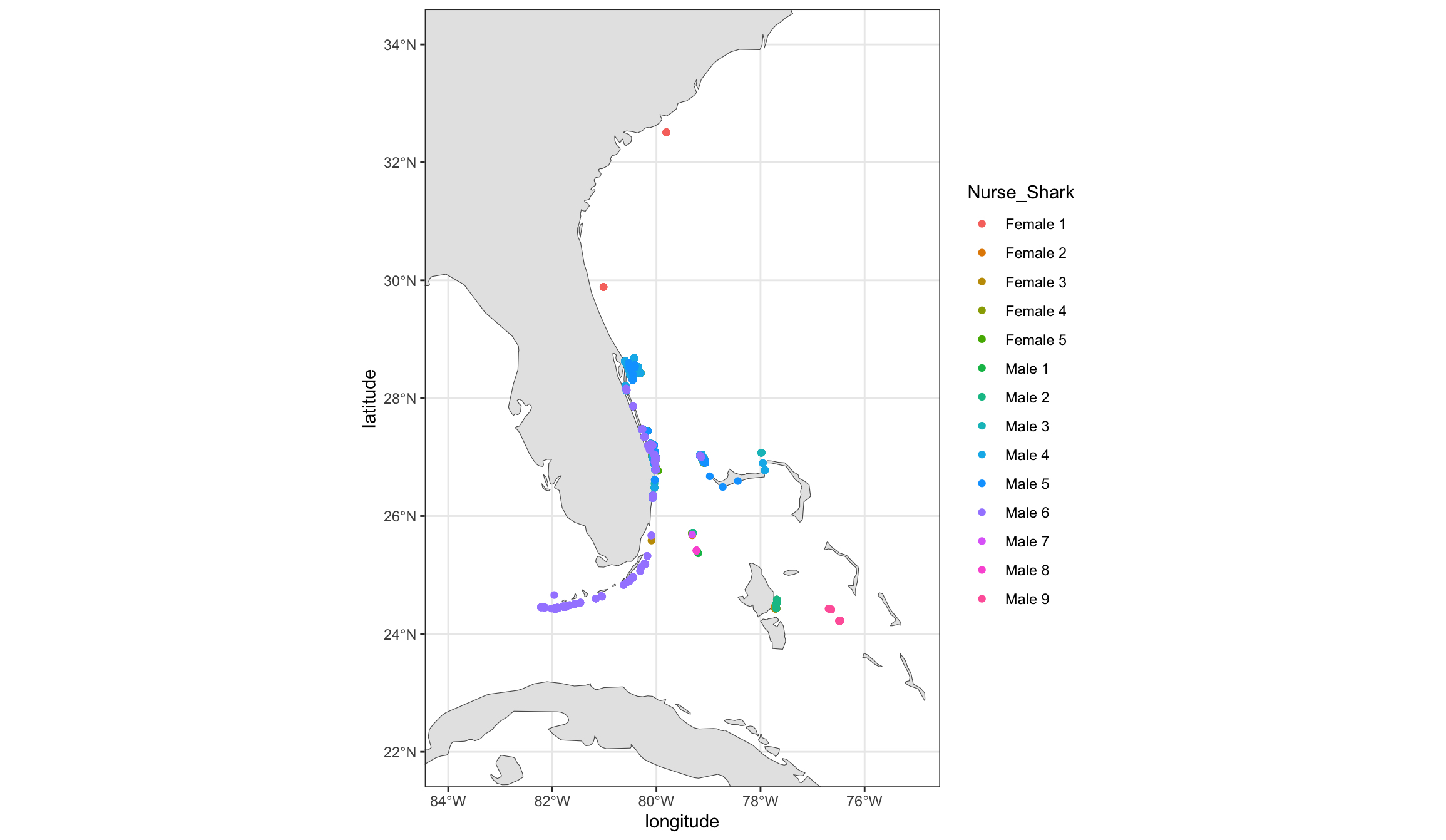Nurse sharks – unexpected ocean travelers
Atlantic nurse sharks (Ginglymostoma cirratum) are a common species throughout the Western North Atlantic. For many beachgoers or snorkelers, this may be the first shark species that they encounter. This species is frequently observed in marinas, jetties, rocky intertidal areas, or reefs. They are seen in these areas often resting under the structure or debris, as they are capable of buccal pumping and do not need to swim for ventilation. Their catfish resemblance and ‘puppy-like’ demeanor endears them to many as a non-intimidating first shark to encounter, although they can reach remarkable sizes of up to 3 m. Across much of the Southeastern United States, the species is one of the most frequent species in shark abundance surveys. They have a propensity for tangling gear, which has earned them a love-hate stigma for many researchers. Due to their commonality, the species is often a second thought of research projects and conservation initiatives.
Bimini has become world renown for the local dive site that provides reliable encounters with the large and iconic great hammerhead shark. For anyone who has had the privilege to dive the location, they know nurse sharks are a secondary and much more common species there. On a single dive, one can expect to observe 20 to 30 nurse sharks laying on the bottom patiently waiting for a piece of bait intended for the great hammerheads. These nurse sharks are so plentiful that they are often overlooked, with most people focused on the charismatic great hammerheads swimming over their heads. However, for people who frequent the dive site and look closely, they will begin to recognise individual nurse sharks repeatedly showing up during dives. Some of these individuals have been seen at the location for more than six months throughout the year and across multiple years.

Figure 1: Nurse sharks at the dive site in Bimini, The Bahamas. Photo © Baylie Fadool
Given their apparent sedentary lifestyle and high site fidelity, it is often assumed that nurse sharks do not undertake large-scale movements. However, despite their presumed healthy abundance in much of the SE USA region and frequent capture in research surveys, relatively little telemetry has been conducted for the species and not much is known about their overall regional movement patterns. Other large coastal shark species, such as great hammerhead, tiger, bull, and lemon sharks, have been well documented to transit between Bimini and the SE USA. This movement covers at least 80 km across open ocean, including pelagic areas with more than 1,000 m in depth.
Surprisingly, a long-term acoustic telemetry study conducted from the Bimini Shark Lab has now documented several nurse sharks making the journey between Bimini and the USA. Sharks originally tagged in Bimini have been tracked spreading significant time around Bimini, but then moving along the east coast of Florida, and as far north as South Carolina. This is a straight line distance of more than 750 km in one direction. These findings corroborate some similar long range movements of nurse sharks in Dry Tortugas and along the west coast of Florida. As a whole, these wide ranging movements of nurse sharks highlight that there is still much we do not understand, for even the most commonly occurring of shark species.

Figure 2: Acoustic detections of nurse sharks tagged in Bimini, The Bahamas. Movements from Bimini throughout the Southeastern United States and The Bahamas. Photo © Bimini Shark Lab
